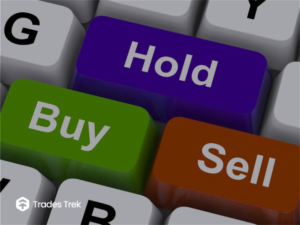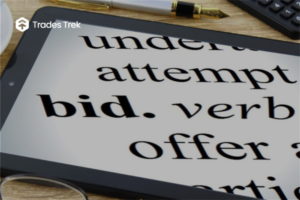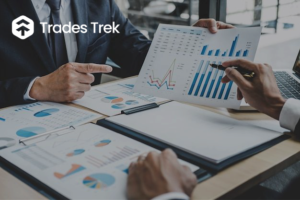Cash is referred to as the most liquid asset
Liquidity in the stock market manifests as the ease of buying and selling shares at the current market price. Stocks with high liquidity allow for easier conversion into cash or trading compared to securities with low liquidity. Investors need to understand the concept of liquidity to determine the stability and efficiency of financial markets. There are two measures of liquidity; market and accounting liquidity.
Get started trading in a virtual environment before risking real cash. Download the Trades Trek Stock-Trading Simulator available on Android and IOS and get 500,000NGN in virtual cash to get started today!!! Become an expert investor for free with no capital investment.
Market Liquidity
Market liquidity is the degree to which securities can be traded easily on a particular market. If a financial security has a high trading volume not dominated by selling, the bid price (price offered by the buyer) and the ask price (price the seller accepts) will be close together. A market is highly liquid when the spread or difference between the asking price and the bidding price for an asset is close. But, if the spread between these prices grows apart the market becomes less liquid. Real estate markets, rare collectables markets, and art markets consider illiquidity.
Accounting Liquidity
Accounting Liquidity is the ease with which an organisation or individual can convert available assets to cash to meet up with financial obligations. The accounting liquidity of an organisation can be assessed by comparing liquid assets available to liabilities, debts, and financial obligations that are due yearly. Investors and analysts use various ratios to measure accounting liquidity to identify companies with good liquidity levels.
How to Measure Liquidity?
When measuring the liquidity of a company, a value greater than one is most desirable. Ratios used by financial analysts to determine a company’s liquidity are;
Current ratio
The current ratio measures liquidity by dividing the current company liabilities by its assets.
Formula:
Current ratio = Current Assets ÷ Current Liabilities
Quick Acid-Test Ratio
The quick ratio formula excludes all illiquid assets and all non-cash equivalents.
Formula:
Quick Ratio: (Cash & Cash Equivalent + Short-term Investments + Accounts Receivable) ÷ Current Liabilities
Acid-Test Ratio
This is a variation of the quick acid-test ratio, it subtracts inventories and all prepaid costs from the current assets.
Formula:
Acid Test ratio= (Current Assets-Inventories-Prepaid Costs) ÷ Current Liabilities
Cash Ratio
The cash ratio formula defines liquid assets based only on cash and cash equivalents. It measures the ability of a company to convert its assets to cash in case of an emergency. The cash ratio is referred to as the most accurate of the liquid ratios.
Formula;
Cash ratio: Cash & Cash equivalents÷ Current Liabilities
How To Identify Liquid Stocks?
Liquid stocks have high trading volume and a relatively balanced buying and selling ratio. Stocks that are liquid on the stock market have tighter bid-ask spread. That is the price the seller is willing to accept is close to the price the buyer is willing to pay. Some other factors that affect stock liquidity are;
- Market Capitalisation: Stocks of companies with large market capital tend to be more liquid and have high trading volume , due to high investor interest.
- Sector: Stocks in certain sectors such as healthcare, finance, and technology tend to have high investor interest and trading activity, making the market more liquid.
- Company size: Companies with a high profitability track record usually attract investors, making the market a highly liquid market.
Why is Liquidity Important?
For example, you own a rare art collection valued at 100 million naira. If there are no buyers for your art, you may have to sell at a lower price, because you cannot find someone to pay for the exact value of your asset (this is an illiquid market). Companies must have sufficient liquid assets to cover financial obligations, so they do not fall short and face bankruptcy.
FREE STOCK-TRADING SIMULATOR
Get started trading in a virtual environment before risking real cash. Download the Trades Trek Stock-Trading Simulator available on Android and IOS and get 500,000NGN in virtual cash to get started today!!! Become an expert investor for free with no capital investment.




